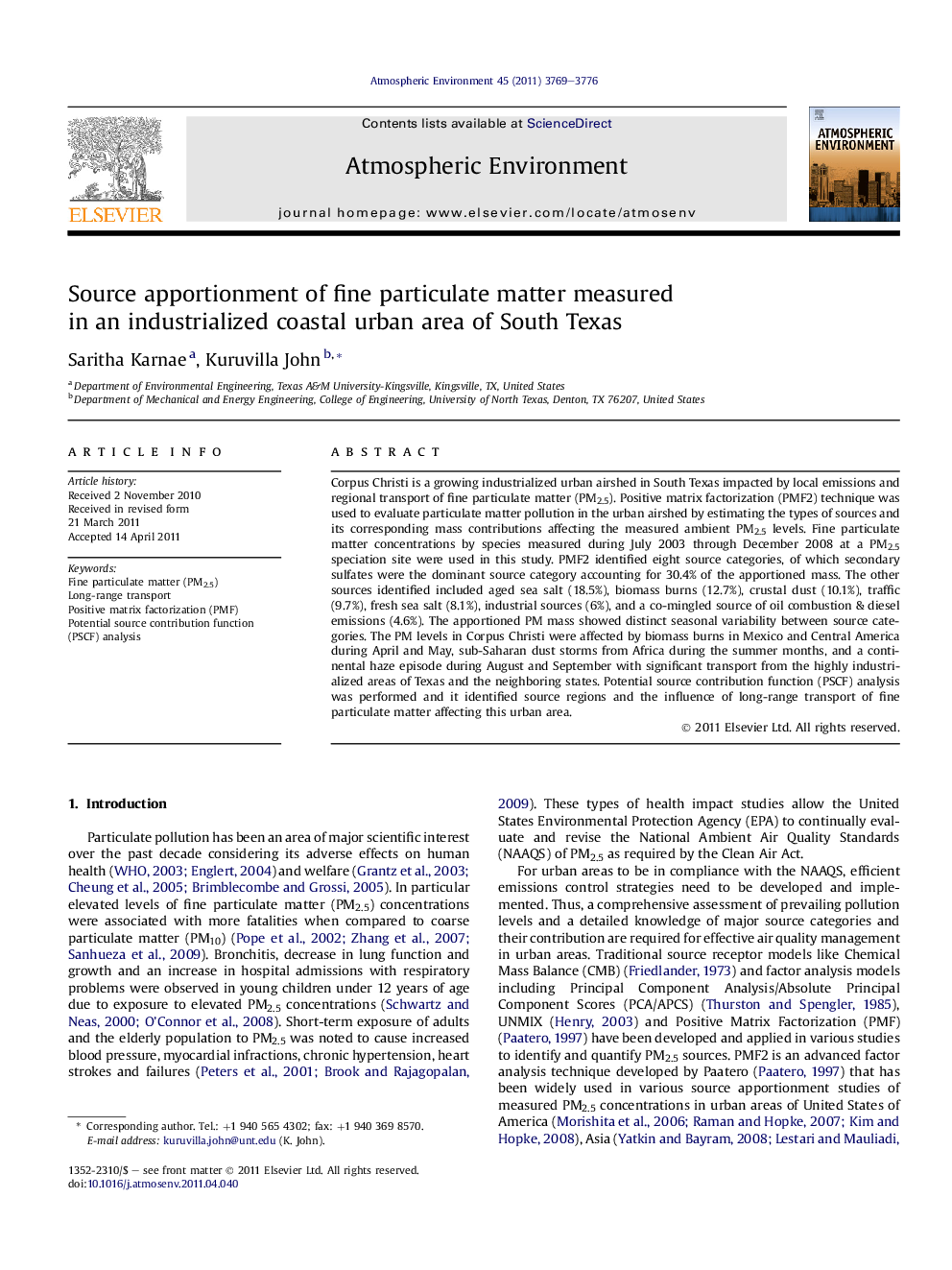| Article ID | Journal | Published Year | Pages | File Type |
|---|---|---|---|---|
| 4439685 | Atmospheric Environment | 2011 | 8 Pages |
Corpus Christi is a growing industrialized urban airshed in South Texas impacted by local emissions and regional transport of fine particulate matter (PM2.5). Positive matrix factorization (PMF2) technique was used to evaluate particulate matter pollution in the urban airshed by estimating the types of sources and its corresponding mass contributions affecting the measured ambient PM2.5 levels. Fine particulate matter concentrations by species measured during July 2003 through December 2008 at a PM2.5 speciation site were used in this study. PMF2 identified eight source categories, of which secondary sulfates were the dominant source category accounting for 30.4% of the apportioned mass. The other sources identified included aged sea salt (18.5%), biomass burns (12.7%), crustal dust (10.1%), traffic (9.7%), fresh sea salt (8.1%), industrial sources (6%), and a co-mingled source of oil combustion & diesel emissions (4.6%). The apportioned PM mass showed distinct seasonal variability between source categories. The PM levels in Corpus Christi were affected by biomass burns in Mexico and Central America during April and May, sub-Saharan dust storms from Africa during the summer months, and a continental haze episode during August and September with significant transport from the highly industrialized areas of Texas and the neighboring states. Potential source contribution function (PSCF) analysis was performed and it identified source regions and the influence of long-range transport of fine particulate matter affecting this urban area.
► PMF2 was used to evaluate particulate pollution levels in Corpus Christi, Texas. ► Eight sources were apportioned with major contribution from secondary sulfates. ► Local impact from industrial sources, traffic and marine aerosols was observed. ► Long-range transport of PM2.5 due to haze, biomass burns and dust storms evaluated. ► Seasonal variability in the apportioned sources and its impact were observed.
